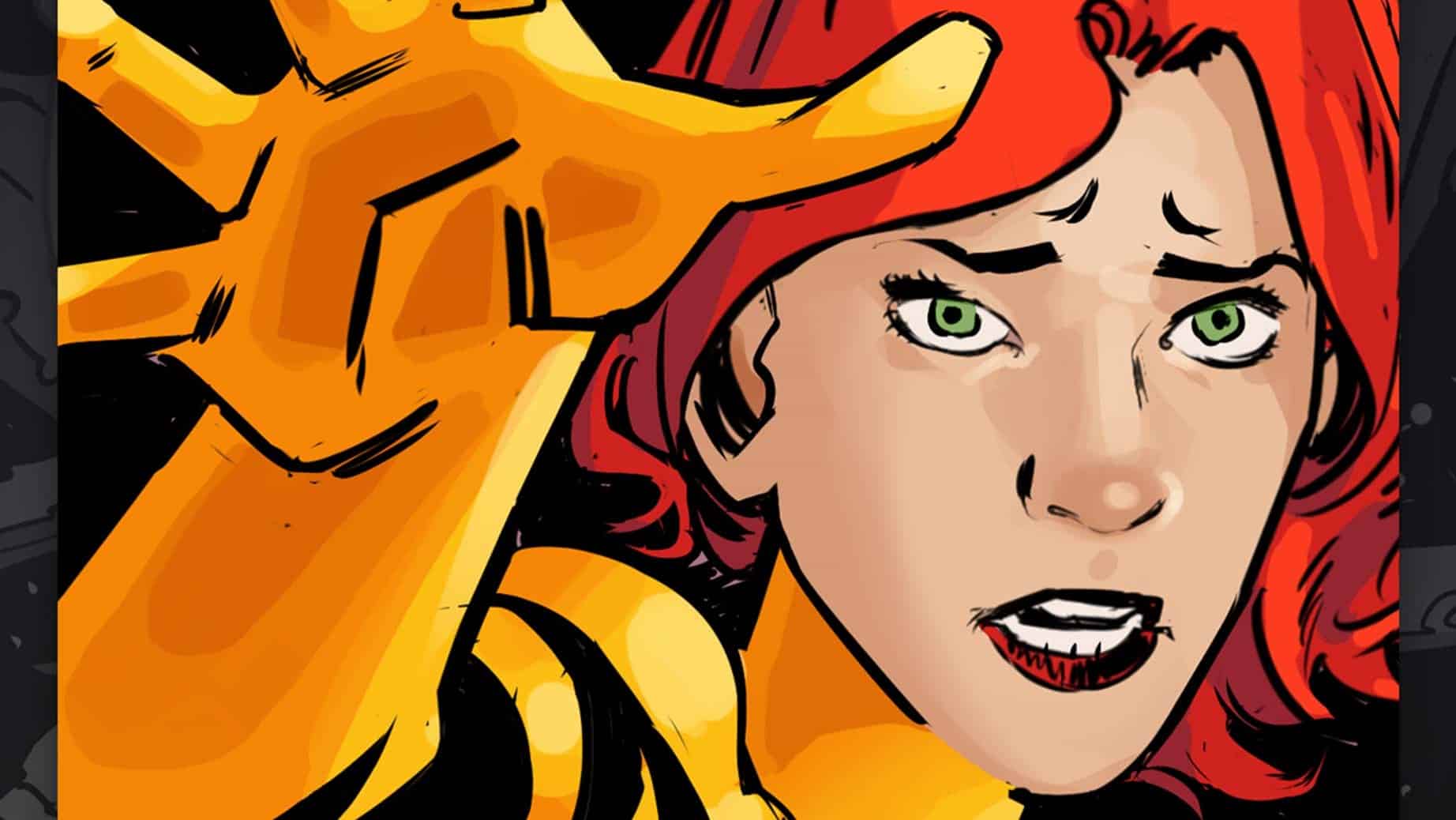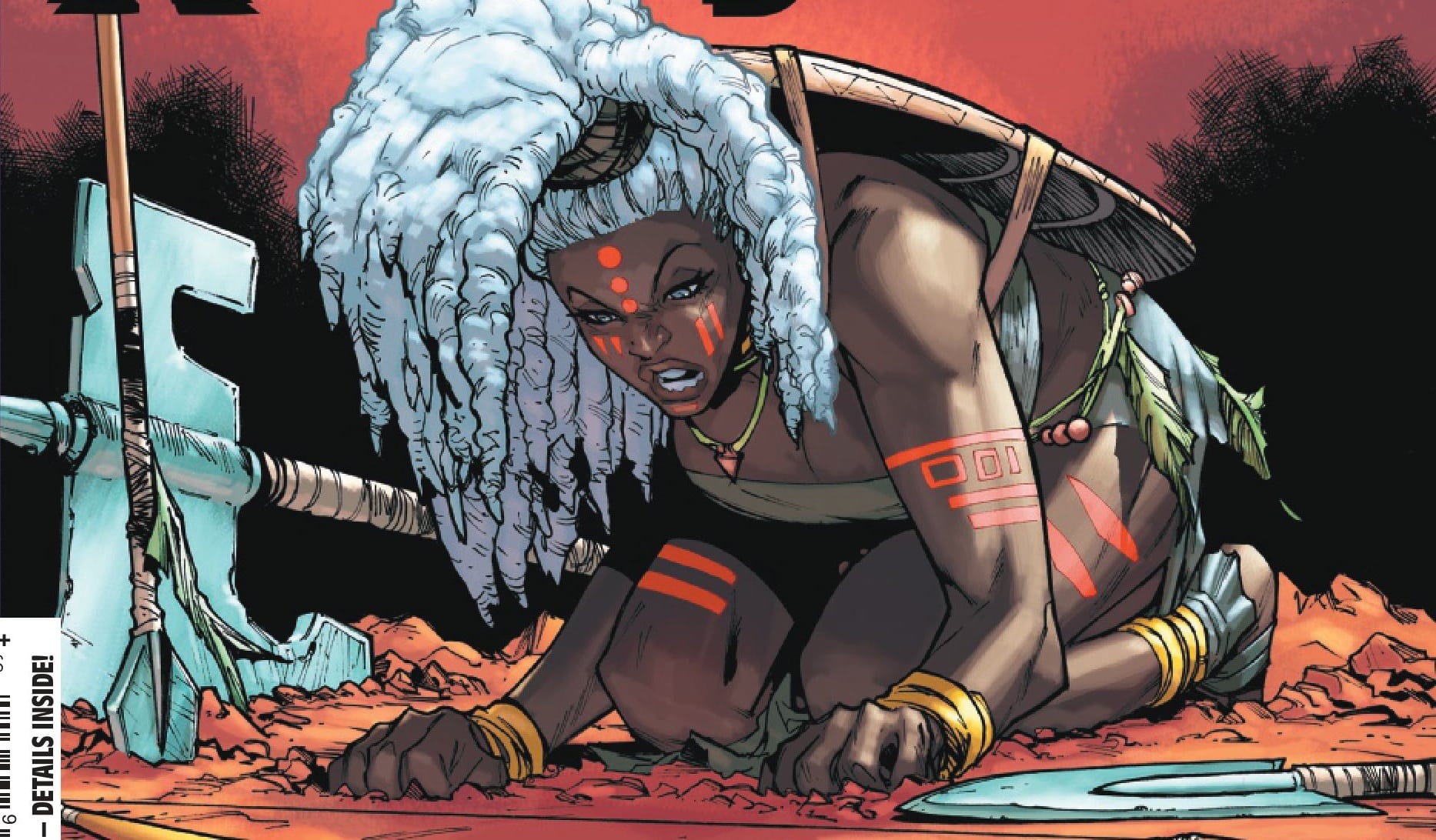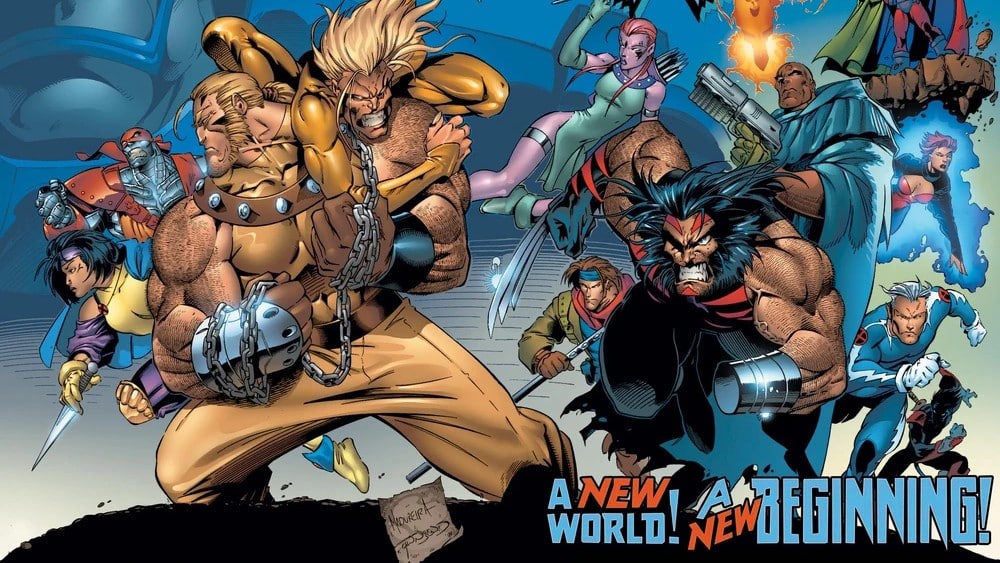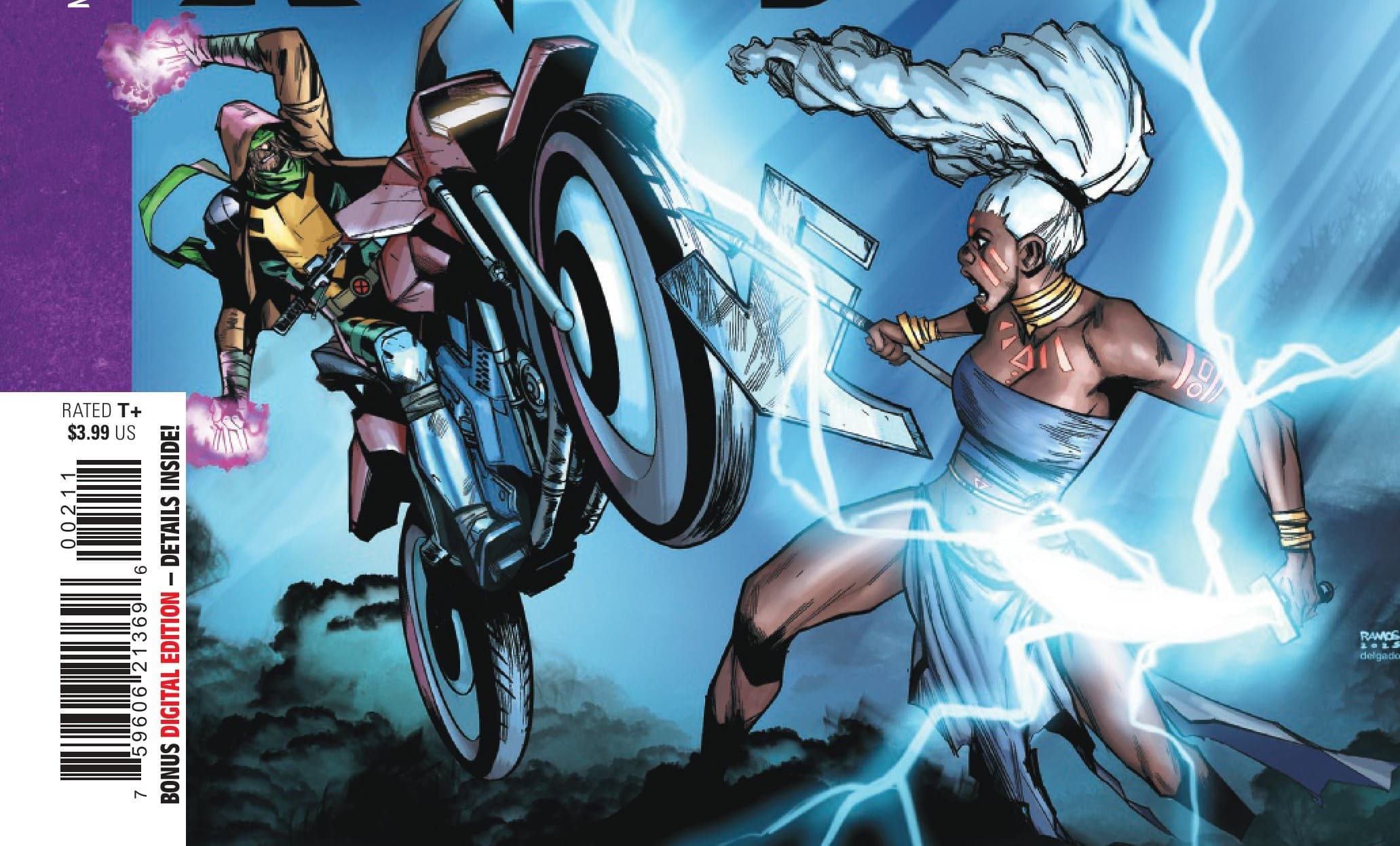As the final curtain came down on the Hellfire Gala, Charles Xavier sent thousands of mutants away from Krakoa to places unknown, kickstarting the Fall of X era. As the X-office shuffled the deck, A-list mutants either returned to star in successful ongoing titles or were given headlining roles in miniseries. The vast majority found themselves traipsing through the cosmic desert of the White Hot Room, facing horrors like being hunted by metaphysical Wolverines and having to thank Mother Righteous. Some found themselves outside of physical comics entirely and were instead sent tumbling down readers’ phones in the vertical scroll format of the X-Men Unlimited Infinity Comics series that is released exclusively through the Marvel Unlimited app.
The Infinity series has, for 124 issues now, provided the slice-of-life view of Krakoa that many readers felt was missing from the headline titles. These stories have included an insight into Multiple Man’s home life, a study of alternate mutant languages and a St. Patrick’s Day Cassidy family reunion. The quality is variable, but they are generally fun, if nonessential. After Steve Orlando and Steve Foxe took over writing duties post-Hellfire Gala, the quality and importance of the weekly digital comics rose substantially. They provided readers with resolutions to longstanding plot threads like Sunfire’s quest to rescue Redroot from Otherworld and Firestar’s espionage mission at Orchis, as well as deepening the lore of Arakko and reviving organised mutant resistance force X-Corps.
The Infinity stories are fertile ground for Foxe and Orlando to take risks, to tell stories about fan favourites who perhaps lack broader public appeal but still have a role in Krakoa’s wider narrative. They’re both creators who have mined the deep recesses of X-Men continuity in past stories, but the difference here is that they are free to dedicate space to underused characters without having to share the limelight with the big names. The casts of these stories are typically more diverse than the headline titles and have deftly engaged with real-world issues like violence against Indigenous peoples, the importance of organized resistance and right-wing media manipulation. At a time when the main books appear to be moving to a more conservative status quo focussed on a smaller cast, these stories feel vital in a way they haven’t before. Both writers bring a fresh perspective to X-Men stories, and their work deserves celebration.
Feeling like you’ve missed out? Don’t worry, we’ve got you covered. Here’s a rundown of the four story arcs since the Hellfire Gala.
Journey to Otherworld: The Redroot Saga
Steve Foxe and Steve Orlando (Writers), Lynne Yoshi (Artist), Fer Sifuentes (Colorist), Travis Lanham (Letterer)
“The Redroot Saga” follows up on a plot thread left dangling from “X of Swords” into X-Men. His passion for the mutant cause reignited, Sunfire sets out on a quest to rescue Redroot, the voice of Arakko, from Otherworld, armed only with a magic compass engraved into his hand. His characteristic bravado dissipates the weaker and more desperate he becomes, yet he remains determined to fulfil his obligation. The emotional toll of the journey on Sunfire is conveyed particularly well by writers Foxe and Orlando and artist Lynne Yoshi, who does a great job throughout fleshing out a post-Saturnyne, apocalyptic Otherworld.

When Shiro Yoshida’s journey leads him into Orchis and Moira X’s clutches, he sees mutants being exploited for resources, yet vows: “For as long as one mutant still stood … there was an ember of hope for the future. An ember Sunfire could stoke into an inferno.” During the brutal showdown with an especially cartoonishly evil Moira, she stabs him with Redroot. Rather than burn Redroot out, the two are bonded together and become a powerful symbol of unity between Krakoa and Arakko.
Inside Woman: Firestar vs. Orchis
Steve Foxe and Steve Orlando (Writers), Guillermo Sanna (Artist), Java Tartaglia (Colorist), Travis Lanham (Letterer)
Firestar being tasked with an Orchis infiltration mission by a dying Jean Grey was one of the most hotly anticipated storylines coming out of the Hellfire Gala. Firestar’s strained relationship with her mutant identity had begun to heal over in the flagship title, and she had begun to endear herself to her fellow mutants and readers alike. This poison chalice of an assignment would frame her as a traitor to her people, placing her in immediate danger. Angelica Jones’ story continued into Gerry Duggan’s X-Men but quickly found itself competing for limited page space. Having written the character brilliantly in the 2022 X-Men Annual, Foxe was perfectly positioned to complete the arc alongside Orlando.

As with any spy, Firestar’s dedication to the cause is challenged almost to the breaking point. She contends with the re-emergence of her ex Justice, being patronized by Orchis bigots and being the face of an anti-mutant PR campaign. The story engages deftly with real-world issues, in particular fearmongering media campaigns against minority groups that feel all too contemporary. Through this, Firestar is forced to be both victim and perpetrator, and her emotional anguish is palpable at every turn. Foxe and Orlando achieve this by giving Firestar a constant stream of inner monologue that cuts against her dialogue and her actions. When she reveals she has been manipulating events the entire time, Orchis begins to tear itself apart. It’s extremely satisfying.
Blood Dawn: An Arakki Holiday Special
Steve Foxe and Steve Orlando (Writers), Phillip Sevy (Artist), Ceci De La Cruz (Colorist), Travis Lanham (Letterer)
Largely as a consequence of Al Ewing’s deepening of its lore in X-Men Red, stories about Arakko are in high demand from avid readers. Following the dramatic conclusion of the “Genesis War” in X-Men Red #18, Foxe and Orlando’s Infinity comic further enriches Arakki customs through more decompressed storytelling. Ostensibly a holiday special, the story begins on the eve of the Blood Dawn, which is a festival that enables Arakki warriors to release their pain and trauma through ritual combat. The story is told from Sunspot’s perspective as he processes his grief over the deaths of his closest friend, Cannonball, recent confidante Nova and all of those lost at the Gala.

Sunspot is a great choice for this story because it allows Foxe and Orlando to slowly but surely break through his protective layer of self-confidence to reveal a raw and honest side that we rarely get to see. Artist Phillip Sevy captures the pain of the core characters well, even if the panel layouts and breakdowns feel more suited to the drama of a page turn rather than the scroll format.
At the story’s conclusion, Roberto Da Costa grieves alongside his Arakki compatriots and eventually moves past his guilt. The Blood Dawn has clarified his purpose, and he resolves to return home, promising something bigger than the X-Men and to take the fight to Orchis. Appropriately, his former team leader Dani Moonstar seems to have had the exact same thought.
A Culture of Defiance: Dani Moonstar and X-Corps
Steve Foxe and Steve Orlando (Writers), Phillip Sevy (Artist), Yen Nitro (Colorist), Travis Lanham (Letterer)

This still-in-progress Infinity arc deals with the displacement aspect of the genocide being enacted upon mutants, which is mapped onto the Indigenous American population and the Proudstar brothers’ Camp Gozhoo reservation. John and James have used their home to house the mutants who have been displaced from across America, although Orchis is onto them. As strong as they are, Thunderbird and Warpath are powerless to fight back, and with Crule of the Externals (Yep, they’re back) causing an almighty distraction, Orchis is able to kidnap the mutants seeking refuge. Dani Moonstar takes on the role of community leader as she highlights the need for organized resistance, for mutants to band together in a “culture of defiance.” She reforms X-Corps as a global force to tackle the divide-and-conquer approach with a growing, international mutant army behind her. The big bad behind it all? The immortal traitor herself, Selene.
This story, as with the others, is more thematically essential than it is integral to the linewide plot. That’s by design. But if you find yourself wanting to read more stories about the underappreciated, underused mutants, Foxe and Orlando have you covered.
Dan Grote is the editor and publisher of ComicsXF, having won the site by ritual combat. By day, he’s a newspaper editor, and by night, he’s … also an editor. He co-hosts The ComicsXF Interview Podcast with Matt Lazorwitz. He lives in New Jersey with his wife, two kids and two miniature dachshunds, and his third, fictional son, Peter Paul Winston Wisdom. Follow him @danielpgrote.bsky.social.






